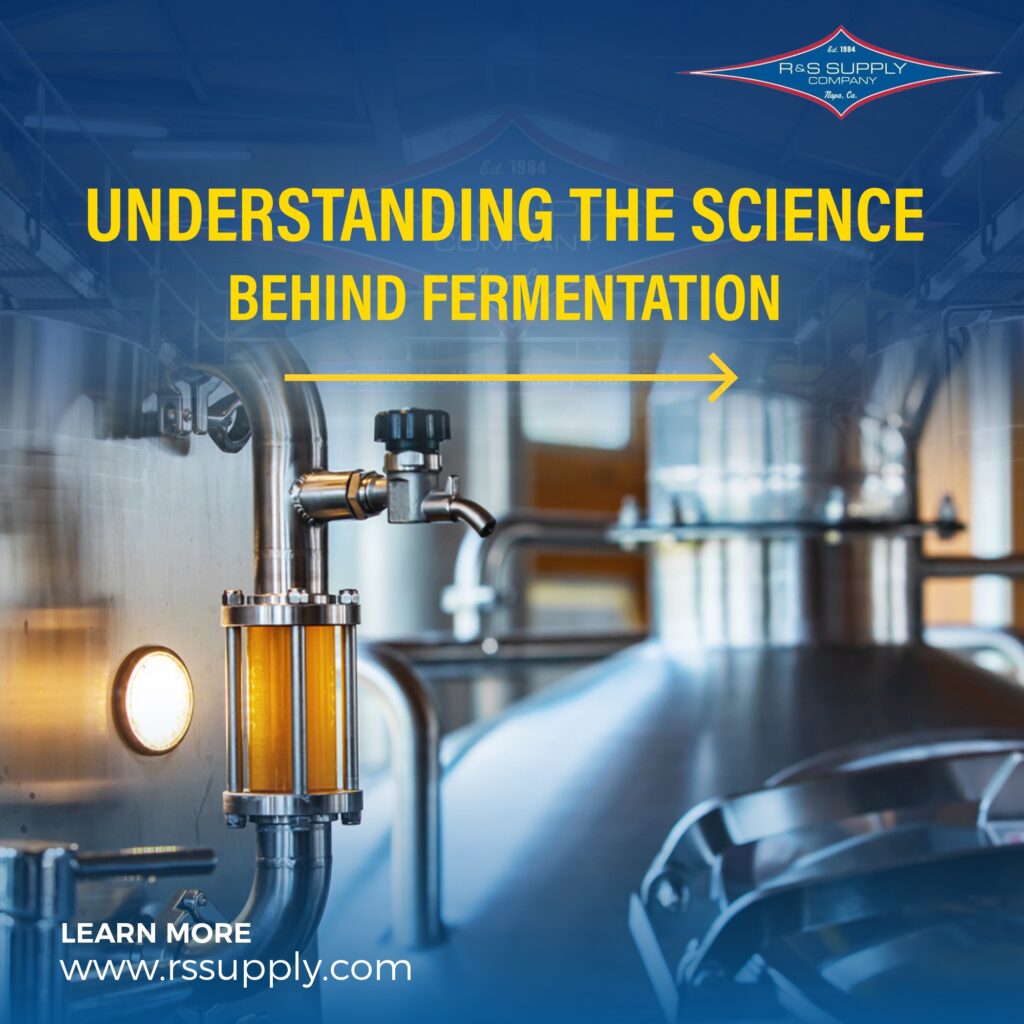Fermentation is the heart of beer brewing and winemaking—a fascinating biochemical process that transforms simple ingredients into delicious, aromatic beverages. This guide explores the science of fermentation and the essential equipment needed to manage it effectively.

The Basics of Fermentation
Fermentation is the metabolic process where yeast converts sugars into alcohol and carbon dioxide. In brewing and winemaking, two key types of fermentation are involved:
Alcoholic Fermentation
Converts sugars into ethanol and carbon dioxide using yeast.
Forms the foundation of beer and wine production.
Malolactic Fermentation
Secondary fermentation process.
Converts malic acid into lactic acid, softening wine acidity.

The Role of Yeast
Yeast plays a pivotal role in fermentation by transforming sugars into alcohol while also affecting flavor and aroma. The functions of yeast include:
Metabolizing Sugars
Yeast consumes glucose, fructose, and maltose in wort (beer) or must (wine), converting them into alcohol and CO2.
Flavor Development
Yeast produces esters and phenols during fermentation, imparting fruity, floral, or spicy notes to the final product.

The Fermentation Process
The fermentation process is divided into distinct stages:
Initiation
Yeast is introduced to wort or must at a controlled temperature to promote optimal yeast activity.
Primary Fermentation
This phase is highly active, with yeast consuming sugars rapidly.
Duration: A few days to two weeks.
Secondary Fermentation (Conditioning)
Slower, maturing phase where flavors become more complex.
Duration: Weeks to months.
Completion
Fermentation ends when yeast activity ceases, and the desired alcohol content and flavor are achieved.
Essential Equipment for Fermentation
Effective fermentation management requires specific equipment:
Fermenters
Available in stainless steel, glass, or plastic.
Stainless steel is favored for its durability and ease of cleaning.
Airlocks
Allow CO2 to escape while preventing oxygen and contaminants from entering the fermenter.
Thermometers and Hydrometers
Thermometers monitor temperature, while hydrometers measure specific gravity, ensuring optimal fermentation conditions.
Yeast Nutrients
Provide essential nutrients to the yeast, promoting healthy and vigorous fermentation.
Temperature Control Systems
Includes cooling jackets and heaters to maintain the ideal fermentation temperature.
Monitoring and Troubleshooting Fermentation
Effective monitoring is crucial for consistent, high-quality fermentation. Consider the following:
Temperature Control
Maintaining the correct temperature range is vital for yeast activity and flavor development.
Sanitation
Ensure all equipment is thoroughly sanitized to prevent contamination, which can spoil the entire batch.
Observation
Regularly check fermentation progress by measuring specific gravity and observing yeast activity.
Promptly address any deviations from expected patterns.
Mastering the science of fermentation is essential for brewers and winemakers. By understanding the fermentation process and utilizing the right equipment, you can consistently produce high-quality, flavorful beverages. Whether you are a homebrewer or a commercial producer, proper fermentation management is key to crafting exceptional beer and wine.

